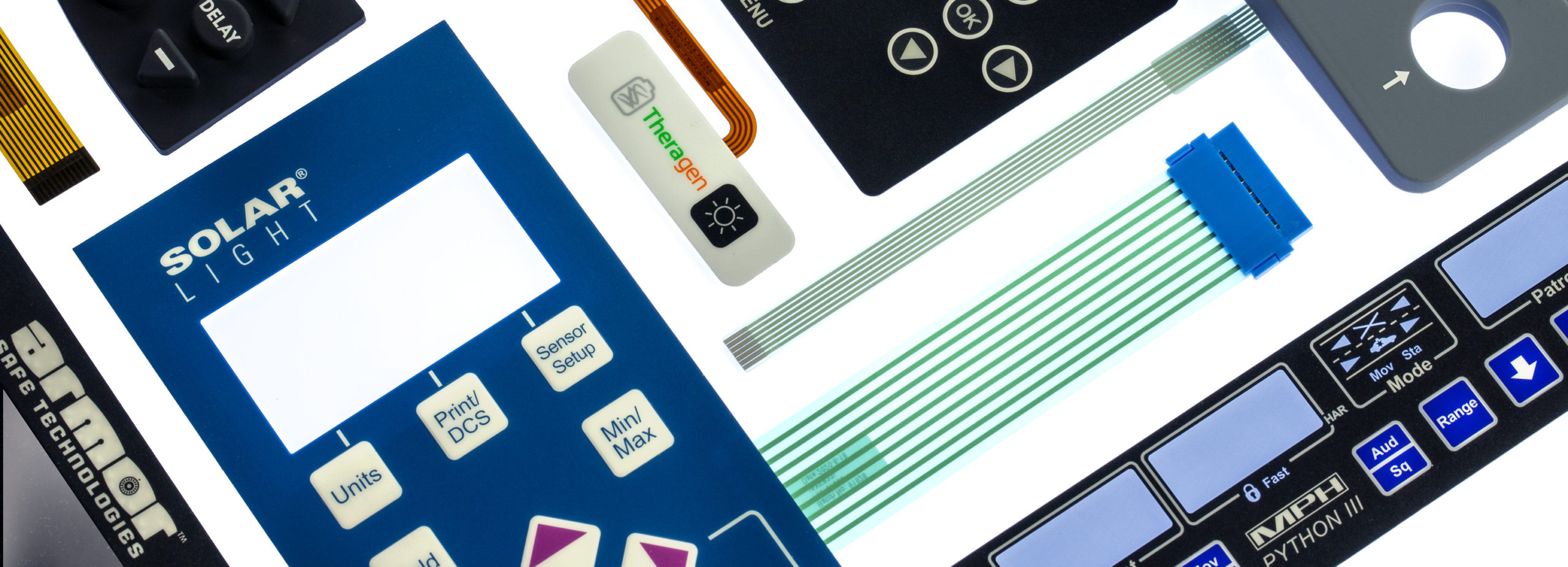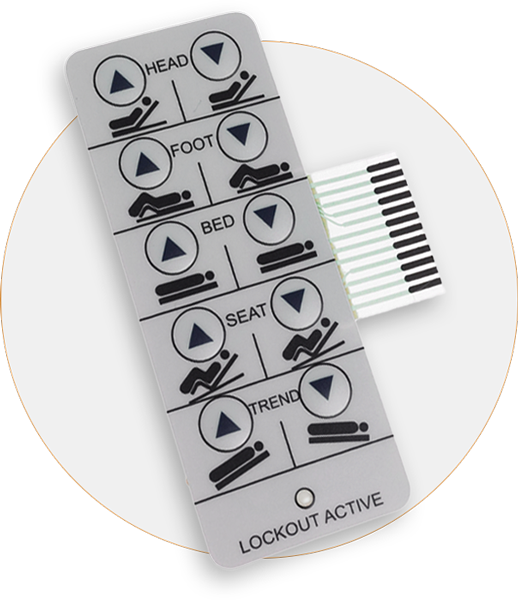Discover the Advanced Layouts and Customization Options for Membrane Switches
Discover the Advanced Layouts and Customization Options for Membrane Switches
Blog Article
The Ultimate Resource on Membrane Layer Switches Over: Style, Capability, and Applications
Membrane changes serve as an appealing junction of style and capability, playing a pivotal function in modern-day individual interfaces across different industries. As we explore the varied applications of membrane buttons, it comes to be obvious that their versatility and toughness are critical in environments varying from health care to customer electronics.

Comprehending Membrane Switches
Membrane switches are a kind of individual interface technology widely used in different digital gadgets, identified by their slim, adaptable design and capability. These switches include numerous layers that consist of graphic overlays, sticky layers, and circuitry, allowing a effective and portable interface for individuals. They can be discovered in home appliances, clinical devices, and industrial control board, providing a dependable technique for individual communication.
One of the primary benefits of membrane layer switches is their capability to stand up to contaminants such as dust and wetness, making them suitable for atmospheres where sturdiness is vital. Their low-profile style permits smooth assimilation right into different applications, while the adjustable visuals overlays boost individual experience by providing clear visual feedback. Furthermore, membrane layer switches can fit a range of modern technologies, such as tactile responses and backlighting, more boosting their usability.
The manufacturing process for membrane switches usually entails display die-cutting, lamination, and printing methods, making certain precision and consistency in production. On the whole, membrane layer switches represent a efficient and flexible option for modern digital tools, incorporating capability with aesthetic appeal in interface layout.
Secret Components and Layout Aspects
A variety of key parts and layout elements collaborated to develop an effective membrane layer switch. At the core, the visuals overlay offers both aesthetic and useful functions, offering an user-friendly user interface while securing internal parts from environmental variables. The option of products, commonly polyester or polycarbonate, influences resilience and responsive feedback.
Under the overlay, the adhesive layer makes certain the switch sticks securely to the substratum, which can be glass, metal, or plastic. The spacer layer is crucial, as it preserves the essential void between the circuit and the overlay layers, permitting efficient actuation. Membrane Switches. Circuit traces, usually made from conductive ink or adhesive, are published on a flexible substratum, making it possible for electrical signals to be transmitted when stress is used
Design considerations additionally include the setup of responsive domes or embossing that offer physical comments to the user, improving the total experience. Additionally, the layout and spacing of the buttons must be optimized for simplicity of usage, ensuring that individuals can browse the user interface with ease. Overall, these parts and layout elements function synergistically to produce a reliable, practical membrane layer button tailored to look at this web-site certain applications.
Capability and Procedure Mechanism
At the heart of efficient performance for membrane layer changes lies their functional device, which facilitates user interaction via an easy yet reliable design. These buttons operate the principle of pressure activation, where an individual applies pressure to a marked location of the switch (Membrane Switches). This action compresses the layers of the button, completing an electrical circuit that sends a signal to the linked device
The building normally includes a top graphic layer, an adhesive spacer layer, and a bottom circuit layer, which jointly develop a robust interface. When pressure is applied, the top layer collapses versus the bottom circuit layer, permitting conductive traces to link. This style not only enables clear tactile feedback yet likewise guarantees durability and reliability, as the buttons are commonly resistant to dirt and moisture.
In addition, the adaptability of membrane switches enables combination with different modern technologies, consisting of LED signs and microcontrollers, improving their functionality. By offering a structured interface that minimizes mechanical wear, membrane layer switches over remain a favored selection in applications ranging from consumer electronic devices look at these guys to industrial tools, guaranteeing optimum performance and user satisfaction throughout diverse environments.
Kinds of Membrane Switches

An additional substantial category is lit up membrane switches, which incorporate backlighting to enhance presence in low-light problems. These buttons are commonly used in control panels and dashboards where clear presence is essential.
In addition, there are personalized membrane changes designed to meet certain dimensional, visual, and useful needs. These customizations can consist of unique forms, shades, and layouts, enabling smooth assimilation right into various devices.

Applications Throughout Numerous Industries
Exactly how do membrane layer switches boost performance across diverse markets? In the medical industry, membrane buttons play an important role in tools such as analysis devices and patient monitoring systems, where dependability and ease of cleansing are extremely important.
In the vehicle sector, membrane buttons are typically utilized in control panels and control panels, offering intuitive controls that enhance motorist security and comfort. The consumer electronics market additionally profits from their light-weight and customizable functions, making it possible for sleek styles for smart devices and home appliances.
Furthermore, membrane layer buttons locate applications in industrial automation, where they contribute to effective equipment procedure and surveillance systems. Their resistance to dirt and moisture guarantees performance popular problems (Membrane Switches). In addition, the food and beverage industry employs membrane switches for devices control, where health and sturdiness are essential
Verdict
In verdict, membrane layer changes represent an essential her explanation advancement in individual interface technology, identified by their special layout and capability. The convenience of membrane switches promotes their application across diverse industries, from clinical gadgets to customer electronic devices.
Membrane layer switches offer as an appealing crossway of layout and capability, playing an essential role in modern-day individual interfaces throughout different markets.Membrane switches are a kind of individual interface technology extensively utilized in numerous electronic gadgets, characterized by their thin, versatile design and performance.At the heart of reliable capability for membrane switches lies their functional device, which facilitates individual communication through a straightforward yet effective style. These buttons operate on the principle of stress activation, where a user uses force to an assigned location of the button.In verdict, membrane layer switches represent a crucial advancement in user interface modern technology, characterized by their special layout and functionality.
Report this page